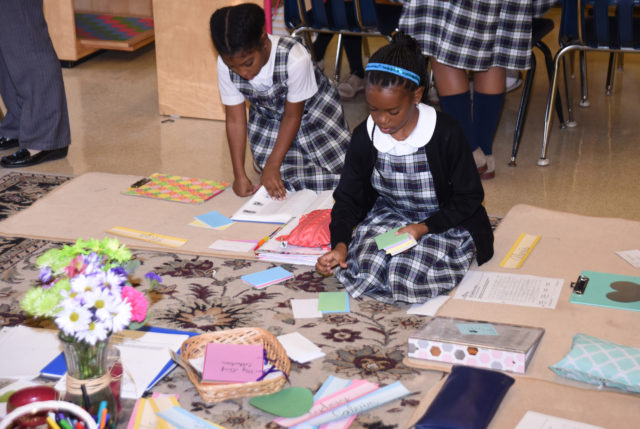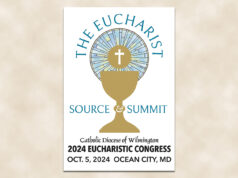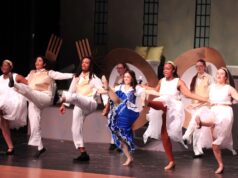
When lessons are first taught at Our Lady’s Montessori School in Kansas, City, Kansas, they’re given without words.
Near the classroom’s water source in the “practical life area,” a teacher pours quietly and offers the child a turn, “Would you like to try?”
Individualized, self-paced, blended-age learning are hallmarks of Montessori education.
Catholic parents looking for nontraditional pedagogy might consider enrolling their children in a Montessori school, and if they can find one, a Catholic Montessori school.
“The goal of a Montessori directoress (teacher) is to be in the classroom as if she didn’t exist, so that the children are moving according to the Spirit and according to their desires and gifts,” said Laurel Sharpe, interim program director and advancement director of Our Lady’s Montessori School.
However instruction is not entirely silent. “When it gets into the more advanced science and math work, words are limited but there are ways that the teacher must guide the child to see and to know the work,” Sharpe said.
In the early 1900s, Maria Montessori, an Italian doctor and a Catholic, developed a child-centered approach with unique learning materials and a classroom setting that fostered students’ innate desires to learn.
Montessori classrooms are “warm, well-organized and inviting, with couches, rugs and flowers to help children and youth feel calm and at home,” the American Montessori Society website explains.
The open design and flow accommodates student choice where students can work in groups or independently, on the floor with mats or at tables.
At Our Lady’s Montessori School, a mission of the Society of Our Lady of the Most Holy Trinity, each classroom has four areas: practical life, sensorial, math and language.
While most Montessori schools are not Catholic, a “Catholic identity” can be blended easily into Montessori methods.
St. Pius X School in Baltimore is the only Catholic Montessori school in Maryland. The school has a primary, lower and upper elementary Montessori school, and a traditional Catholic middle school.
“Part of what we do at Pius is called the Catechesis of the Good Shepherd, and it is the religious component that goes along with the Montessori teaching, philosophy and method. We have a special environment called an atrium,” said Jennifer Ripley, principal of St. Pius X.
In 1954, Scripture scholar Sofia Cavalletti and Gianna Gobbi, a former assistant to Maria Montessori, developed the Catechesis of the Good Shepherd, a hands-on religious education program that functions within an “atrium,” symbolic of where early Christians gathered for instruction.
“The atrium is a very peaceful and calming place,” Ripley said. “We have table lights around the room to soften the experience for the children. It’s really inviting them into a relationship with the Good Shepherd, instead of the workbooks that we used in the past and other traditional Catholic schools use.”
St. Pius X’s atrium has three levels of instruction, she said. Level one is rooted in the Gospel, level two starts to get into morality as part of sacramental preparation and level three, when it is more “developmentally appropriate” introduces the concept of sin. The story the great flood, she said, is a level three work.
Our Lady’s Montessori School, which serves 1 to 6-year-olds, has a level one atrium with a prayer table, candle, a simple prayer card and the “Good Shepherd work” — wooden, handmade and painted figures of the Good Shepherd and his sheep.
Students learn about the parts of the Mass and the parables, and the lessons follow the liturgical year, Sharpe said.
Illustrating how Montessori principles are applied, Sharpe explained that the catechist allows children to come to their own realizations, guiding the students by saying, “I wonder who the sheep is, I wonder who he’s calling by name.”
“As the child gets older, they’ll recognize that’s me, I’m a sheep” and that’s a beautiful moment, Sharpe said.
While a Montessori education may not be for everyone, it should still be investigated by everyone, Ripley said.
“I do really encourage parents to think about it, learn about it and come and observe,” she said.
(Capizzi is special projects editor at Catholic News Service.)






